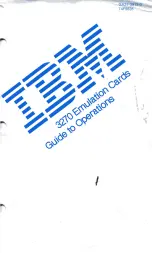
Chapter 14: Cabling the Networking Ports
188
Installing SFP and SFP+ Transceivers
This section contains instructions for installing SFP and SFP+ transceivers
in the ports on the switch.
Note
Refer to the product’s data sheet on the Allied Telesis web site for a
list of supported transceivers.
Here are the guidelines:
Ports 25 to 28 on 28-port x930 switches and ports 49 to 52 on 52-
port switches support 1000Mbps SFP and 10Gbps SFP+
transceivers. They do not support 100Mbps SFP transceivers.
Ports 1 to 24 on the AT-x930-28GSTX Switch support 100/
1000Mbps SFP transceivers. They do not support 10Gbps SFP+
transceivers.
If you are using SFP+ ports S1 and S2 as the VCStack trunk,
review the guidelines in “Trunks of Ports S1 and S2” on page 60
before performing this procedure.
SFP and SFP+ transceivers are hot-swappable. You may install
them while the switch is powered on.
The operational specifications and fiber optic cable requirements
of the transceivers are provided in the documents included with the
devices.
You should install a transceiver before connecting the fiber optic
cable.
Fiber optic transceivers are dust sensitive. Always keep the plug in
the optical bores when a fiber optic cable is not installed, or when
you store the transceiver. When you do remove the plug, keep it
for future use.
Unnecessary removal and insertion of a transceiver can lead to
premature failure.
Warning
Transceivers can be damaged by static electricity. Be sure to
observe all standard electrostatic discharge (ESD) precautions,
such as wearing an anti-static wrist strap, to avoid damaging the
devices.
E86
Summary of Contents for AT-x930-28GPX
Page 8: ...Contents 8...
Page 12: ...Tables 12...
Page 16: ...Preface 16...
Page 82: ...Chapter 2 Virtual Chassis Stacking 82...
Page 92: ...Chapter 3 Beginning the Installation 92...
















































